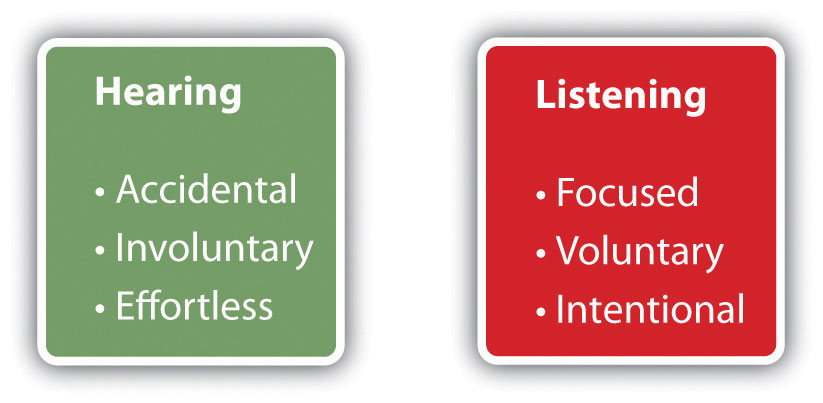Difference Between Listening and Hearing

Listening is the first bond established with music. In fact, if you have decided to play any instrument, not just the guitar, you should think about the quality of listening , which is the most important element of music , and take your listening skills to higher levels by doing certain exercises.
Music, by its nature, is a "universal form of energy" that emerges in the moment and reveals the relationship between sounds and silences. Therefore, the act of listening and the moment in which the music is created must be simultaneous. In other words,the moment, andlisteningandhearingshould be well defined.
Listening is an act that is often confused with hearing or hearing . For example, the speaking sounds of the people around you that you are constantly exposed to during the day, the sounds of a repair work taking place nearby, the sounds of automobiles, the songs you have chosen and want to listen to or the songs chosen by other people outside, the sounds of natural events such as the wind, or the sounds made by other creatures trying to live in the natural habitats around you. There are many sounds like this.
You hear all these sounds , but when you try to understand how much of it you are listening to , you will realize that you actually have a mind that thinks about other issues most of the time. Unfortunately, this is more or less the case when it comes to music.
The difference between listening and hearing can be exemplified as follows:
When the sounds of daily city life surround you, you hear all these sounds , until you hear a favorite melody, a crying child, a vehicle braking suddenly, or any other sound that will stimulate you, instead of hearing it, you consciously hear it . You switch to listening in this way .
At this point, the difference between ' hearing the music ' and ' listening to the music' emerges.
In the society we live in and in the world in general, music is mostly used in activities such as reading a book, studying, eating, traveling by car, socializing with people, watching any visual or video, or as determined by the business manager when we are in a shopping mall or restaurant. We hear music unwillingly . But just because you hear them does not mean that you are listening
Listening to music ?
In order to understand the difference between them, you should at least try to listen to the music you think you like, without doing any activity, just trying to understand the music in the moment, leaving aside many problems of daily life . Then you have taken a big step in listening to music, and each time you do this, you will take your listening capacity and focus to the next level. Each new practice you make to move from hearing to listening to
music will increase from a few seconds to minutes over time, depending on your listening capacity. To the extent you can do this, you will become a conscious listener in a meditative state .
Then you will start to notice the music you listen to more. Over time, you may notice that your musical memory (ear for music) is improving more and more each day.
At the beginning, you will be surprised to observe that music often has similar effects on people, and sometimes different effects, and that people are affected without realizing it.
For example, in an environment where you are socializing with your friends, if the music heard is not chosen consciously, you may observe that while low-tempo music supports an environment where people communicate calmly and comfortably, high-tempo music causes conversations to suddenly become rapid and the movements of people in the community to accelerate and sharpen.
If you think this article added something to you, you can like it, subscribe to our newsletter, follow it on social media or share your thoughts in the comments section.









































































